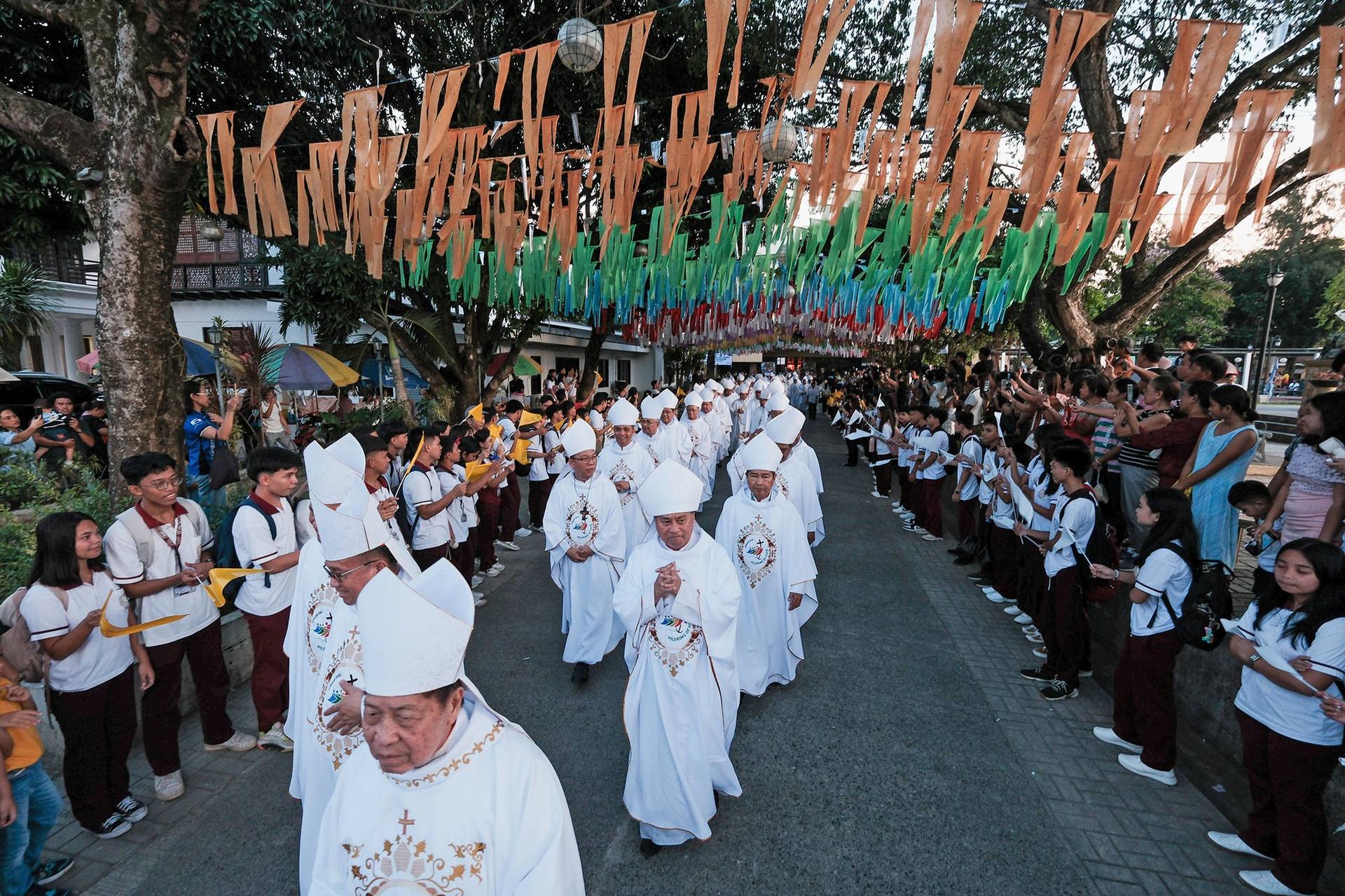In a recent Crux interview, Cardinal Timothy Dolan of New York explained why he’s heading for Iraqi Kurdistan this week. He’s going, he said, to “put some teeth into my big talk” on anti-Christian persecution, which the U.S. State Department now has officially recognized as a “genocide.”
“There’s no better way in the Catholic imagination to show concern than by showing up,” Dolan said, “because that’s what the Incarnation is all about.”
Pope Francis clearly seems to have gotten that memo – or, perhaps, it could be argued he’s the one who sent it out in the first place, since “showing up” in hot-spots around the world to express his priorities is very much what Pope Francis is all about.
The latest example comes with the Vatican’s confirmation on Thursday that Pope Francis will visit the Greek island of Lesbos on Saturday, April 16, in the company of Orthodox Patriarch Bartholomew of Constantinople as well as Archbishop Ieronymos II of Athens, leader of the Greek Orthodox Church.
The three men will meet refugees currently staying on the island, in an obvious effort to make a statement about welcome and tolerance against a backdrop of growing political and cultural resentment across Europe as it struggles with a vast refugee crisis.
Francis signaled in early January in his annual speech to diplomats accredited to the Vatican that 2016 would be the “Year of the Immigrant” for him, and we’ve already seen several examples of that principle in action.
Most famously, Francis included a stop at the U.S. border during his February trip to Mexico, and ended up in a verbal spat with Republican presidential candidate Donald Trump over the pontiff’s insistence that proposals to build a massive wall along the border are “not Christian.”
The outing to Lesbos carries a similar political edge. Earlier this week, the first boats carrying roughly 130 refugees being deported to Turkey left Lesbos, under the terms of a deal brokered between Ankara and the EU.
In context, then, making the brief outing on April 16 is reminiscent of Francis’ first trip outside Rome in 2013, when he visited the Italian island of Lampedusa, another place where waves of migrants and refugees from the Middle East and Africa often wash up.
On that occasion, Francis laid a wreath in the sea to commemorate the estimated 20,000 people who have died in the last couple of decades attempting to cross the Mediterranean to reach Europe. He also condemned what he called a “globalization of indifference” to migrants and refugees.
Going to Lesbos in the company of Bartholomew and Ieronymos also allows the pontiff to move the ball on another key priority: Christian unity.
In effect, Francis’ ecumenical strategy from the beginning has to been to execute an end-run around longstanding theological and ecclesiastical differences among the various Christian denominations by putting the accent instead on shared humanitarian and social values.
The idea is to focus on what can be done together in the here-and-now, allowing a deeper set of friendships and partnerships to emerge that could, with time, recalibrate the way those antique theological differences are understood.
Making the trip as an equal with the two Orthodox prelates sends a reassuring signal about Francis’ commitment to collegiality, as opposed to going solo and stealing the show for himself.
In effect, then, Pope Francis in one fell swoop on April 16 is expressing both his most burning political concern for 2016, which is the humanitarian drama facing immigrants at a time of mounting hostility and xenophobia, and also one of his core ecclesiastical aims, which is closer ties among the various Christian churches, beginning with the Orthodox.
I’ve said it before, and I’ll say it again: To know what this pope is thinking about, you’d don’t need a spokesman or a spin doctor. All you need to do is consult his travel agent.
















